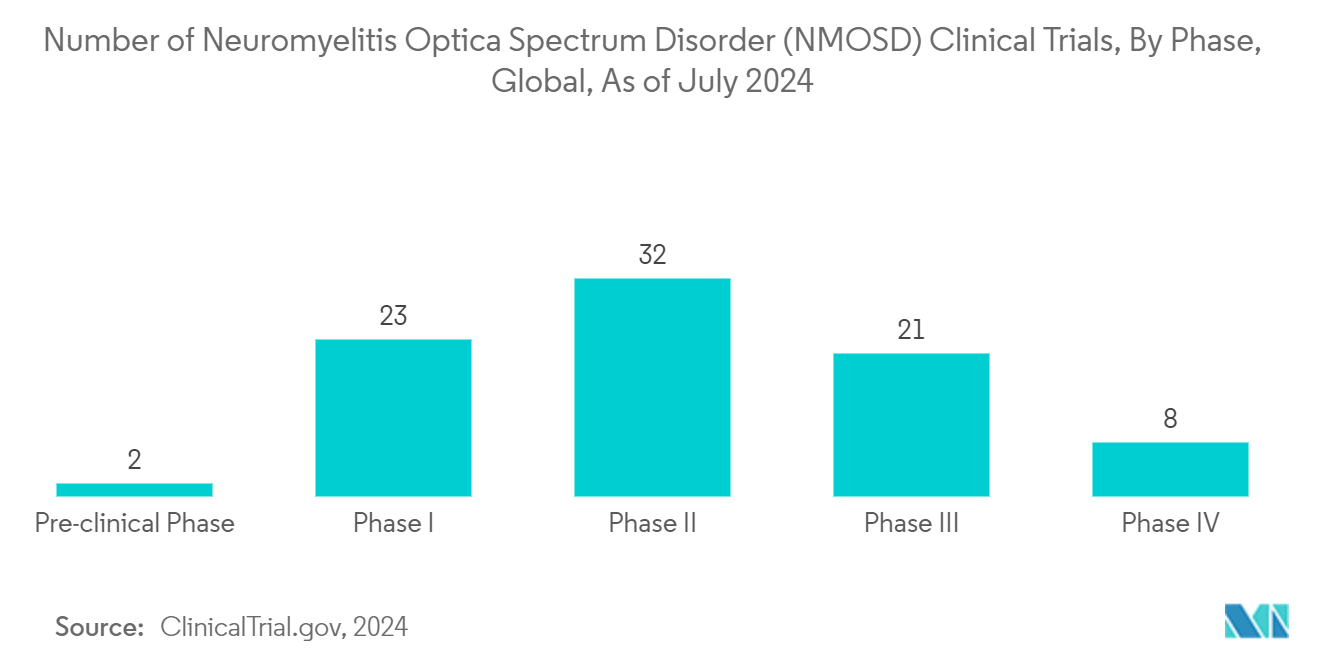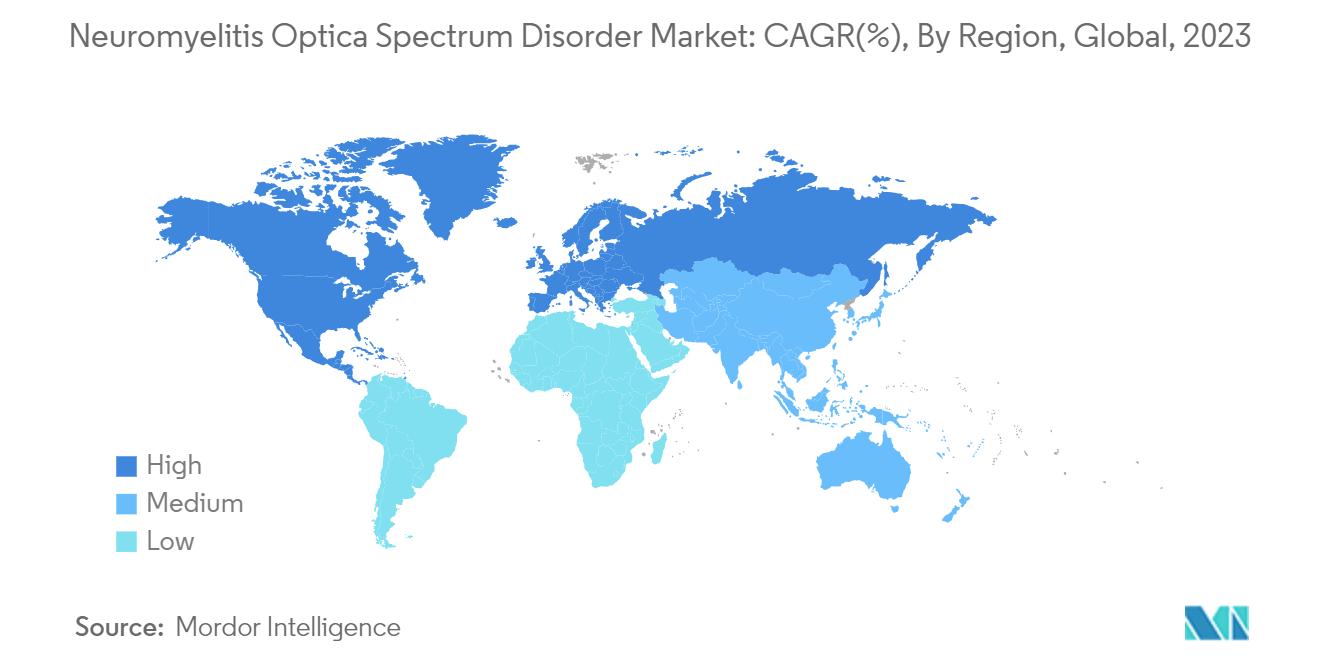Market Trends of Neuromyelitis Optica Spectrum Disorder Industry
The Monoclonal Antibody Drugs Segment is Expected to Register a High CAGR During the Forecast Period
Monoclonal antibodies (mAbs) for treating NMOSD work by targeting specific immune system components to prevent attacks. Rituximab and inebilizumab target CD20 and CD19 on B cells, respectively, leading to their depletion and reducing the production of pathogenic autoantibodies. Eculizumab targets the complement protein C5, inhibiting the formation of the membrane attack complex, which reduces damage to the central nervous system. Satralizumab targets the interleukin-6 receptor, modulating the inflammatory response and reducing immune system overactivity. These targeted mechanisms help in controlling the autoimmune processes underlying NMOSD, thereby preventing relapses and improving patient outcomes.
The monoclonal antibody drugs segment is expected to dominate the market due to its high efficacy and tolerability in treating autoimmune diseases, including neuromyelitis optica spectrum disorder. For instance, according to an article published by Springer Journal in March 2023, monoclonal antibodies such as rituximab, ibalizumab, natalizumab, and eculizumab demonstrated high efficacy in reducing the frequency and severity of NMOSD attacks. These treatments target specific pathways involved in the disease's pathogenesis, providing more effective and tailored therapy than broad-spectrum immunosuppressants. As per the same source, clinical trials showed significant reductions in attack rates and improved quality of life for patients treated with these mAbs, thereby driving the demand for mAbs for NMOSD treatment.
The approval of multiple mAbs by regulatory bodies like the FDA enhanced the availability of these treatments, driving the segment’s growth. For instance, according to an article published by Elsevier in December 2022, the FDA approved inebilizumab, eculizumab, and satralizumab for NMOSD, which boosted their adoption in clinical practice.
Comparative studies highlighted the superior outcomes associated with mAbs, such as longer life expectancy and higher quality-adjusted life years, driving the adoption of these drugs worldwide. For instance, as per the study conducted by the Journal of Neurology in September 2023, the monoclonal anti-CD19 antibody inebilizumab, which, in addition to B cells, also targets CD19-expressing antibody-producing plasmablasts, was proven beneficial in AQP4-IgG-positive NMOSD. Thus, such evidence supports the preference for mAb treatments over traditional therapies, thereby driving the segment’s growth.
The rising number of drug approvals is also projected to drive segmental growth during the forecast period. For instance, in June 2022, Zenyaku Kogyo Co. Ltd and Chugai Pharmaceutical Co. Ltd received regulatory approval from the Ministry of Health, Labour and Welfare (MHLW) for an anti-CD20 monoclonal antibody Rituxan intravenous injection of 100 mg and 500 mg for the prevention of recurrence of neuromyelitis optica spectrum disorder in Japan.
Thus, the increasing efficacy and tolerability of monoclonal antibody drugs, rising product approvals, and research and development activities by market players are driving the growth of this segment, which is further expected to propel overall market growth over the forecast period.

North America is Anticipated to Hold a Significant Market Share During the Forecast Period
North America holds a significant share of the NMOSD market owing to factors such as the increasing incidence and prevalence of NMOSD. For instance, according to an article published by Sage Journals in January 2024, the age and sex-adjusted estimate of people with NMOSD in the United States was 15,413 females and 6,233 males in 2022.
The region's well-established healthcare infrastructure and availability of efficient treatment methods contribute to the market's growth. Moreover, non-profit organizations' financial assistance programs and increasing research and development activities in the region support the market's growth. For example, the Patient Access Network (PAN) Foundation launched a new financial assistance program in November 2023 to support individuals living with NMOSD.
Product approvals and increasing research and development activities in the region are driving the market's growth. For instance, in May 2022, Alexion reported positive results for the open-label Phase III CHAMPION-NMOSD trial of ULTOMIRIS (ravulizumab-cwvz). The study showed a positive impact on relapse in adults with anti-aquaporin-4 (AQP4) antibody-positive (Ab+) NMOSD compared to the external placebo arm from the pivotal SOLIRIS PREVENT clinical trial.
The increasing prevalence of NMOSD, rising research and development activities, and product approvals are expected to fuel the growth of the NMOSD treatment market in North America in the near future.


